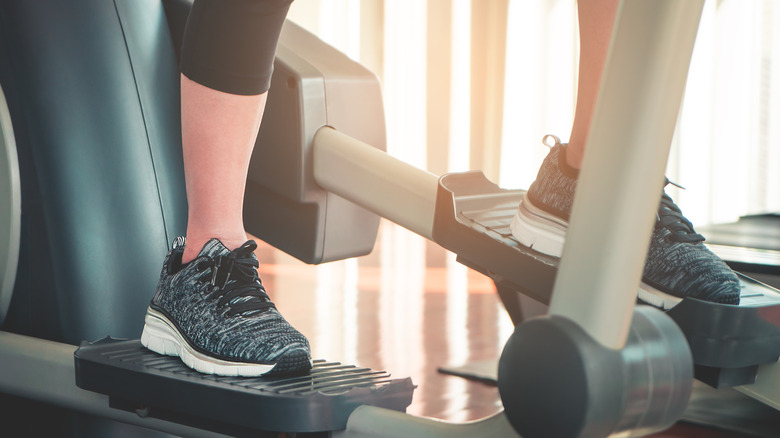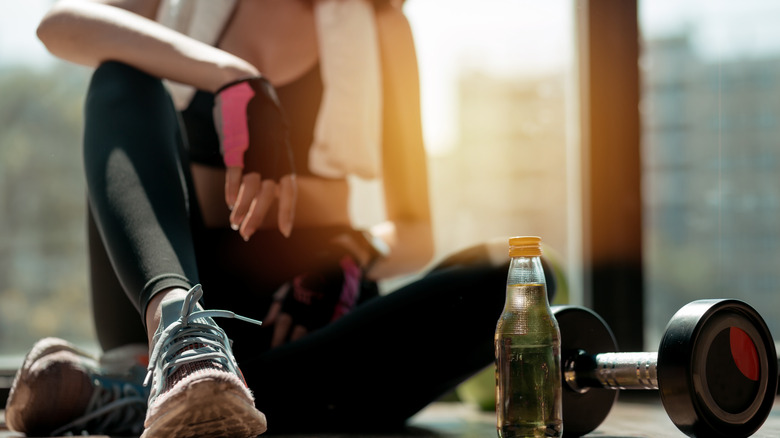The Real Health Benefits Of Using A Vertical Climber
If you're used to working out at home, you may be familiar with some basic home gym equipment, like yoga mats, dumbbells, resistance bands, and even the trusty treadmill. While these can help with fun and effective exercises, working out on a vertical climber is a great way to give yourself a more intense at-home workout without putting too much stress on your joints (via Cleveland Clinic).
The vertical climber is a tall exercise machine with a 75-degree angle that allows you to climb it by strapping in your feet and pushing up on the handlebar while simultaneously pushing down with your leg. Just like an elliptical or stairclimber, you use your opposite hand with your opposite leg and then switch. "The vertical climber is totally different than a bike or treadmill because you're engaging your entire body," exercise physiologist Christopher Travers told Cleveland Clinic. "The movement can be challenging, but it's very effective."
Vertical climbing can build strength and burn calories
Unlike a stair stepper, using a vertical climber mimics the same motion as climbing a ladder. This means that your hands are above your head, holding on to two handles attached to a central beam. Because of this, vertical climbing is an efficient way to challenge your body and get in shape (via U.S. News and World Report). In fact, the exercise is associated with a number of important health and fitness benefits. For instance, vertical climbing can give you a full-body cardio workout. That's because you have to support your own weight when using a vertical climber.
"You're working against gravity, so you're definitely going to get a little bit more bang for your buck in terms of cardiovascular benefits," Chris Kolba, a physical therapist at the Ohio State University Wexner Medical Center, told U.S. News and World Report. As a result, vertical climbing can also help you build strength and endurance while burning quite a bit of calories in a short period of time. Since it's a low-impact exercise, however, you're less likely to put added stress on the joints in your lower body.


